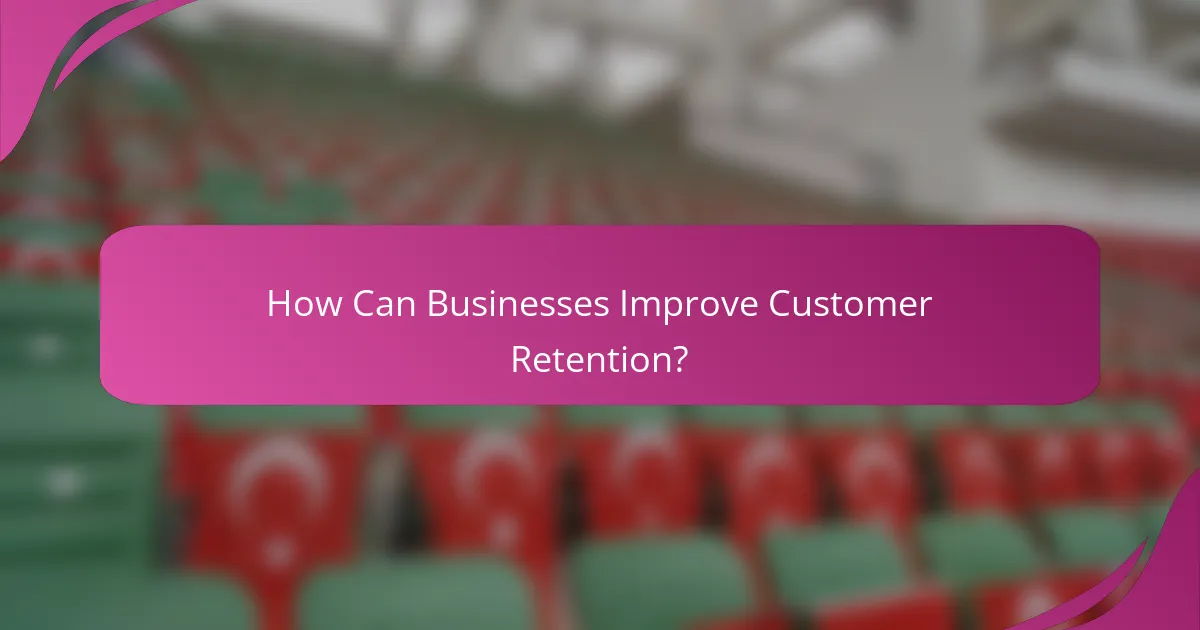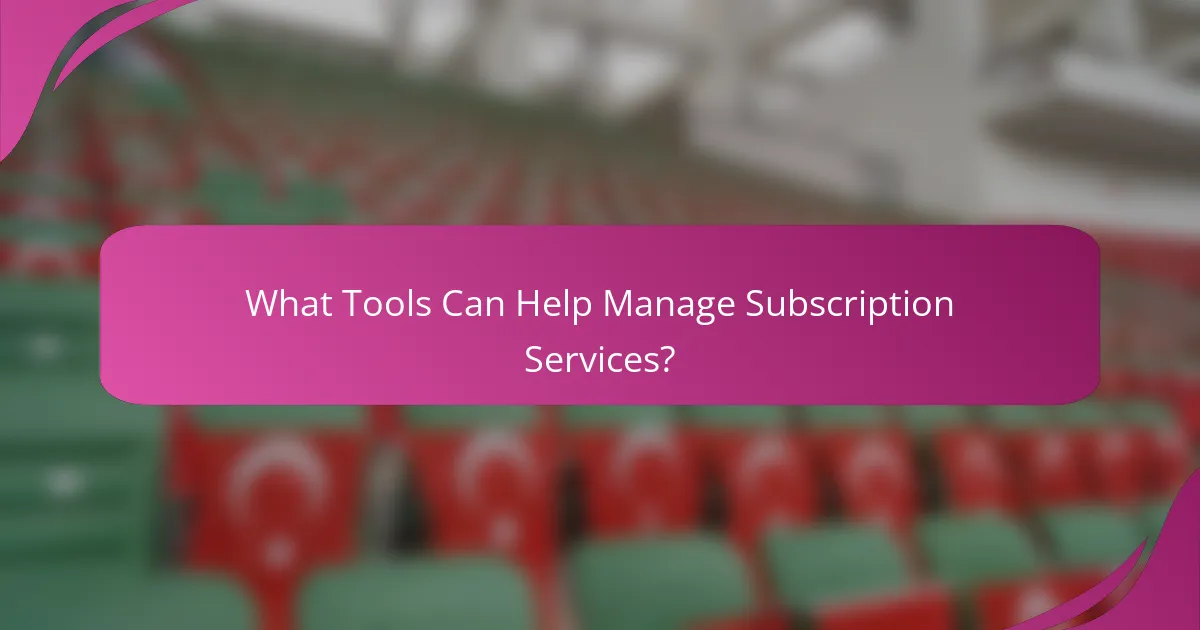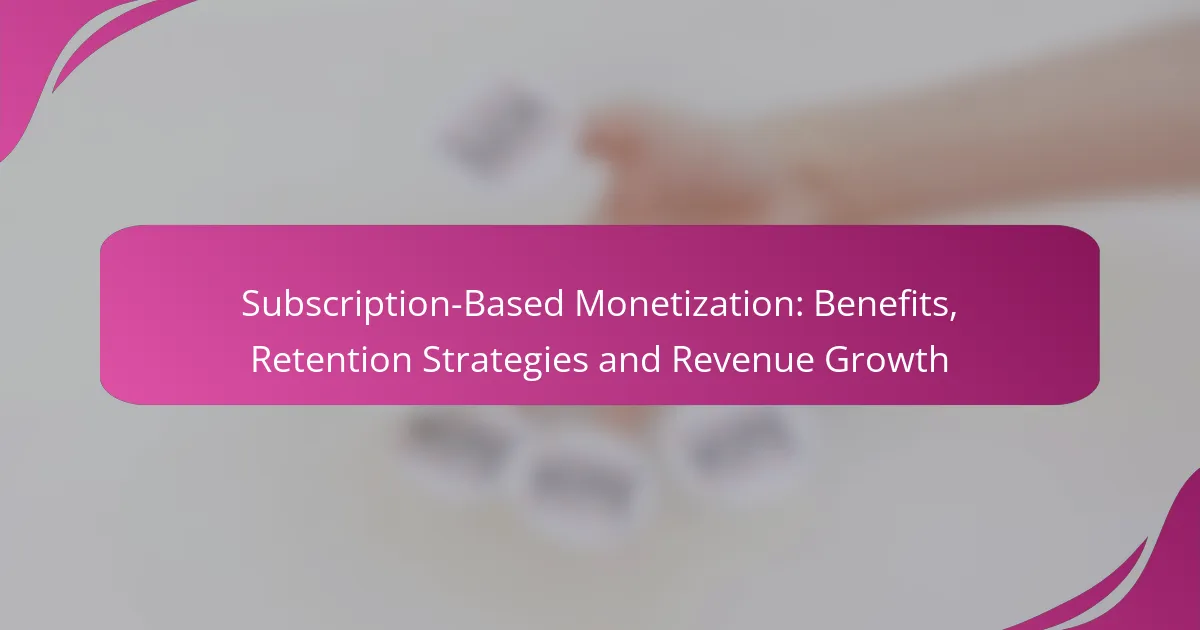Subscription-based monetization has emerged as a powerful strategy for businesses, providing a reliable income stream while nurturing lasting customer relationships. By focusing on personalized experiences and consistent engagement, companies can enhance customer retention and loyalty, ultimately driving revenue growth. Effective pricing strategies further support this model, allowing businesses to attract and retain subscribers while ensuring sustainable financial success.

What Are the Benefits of Subscription-Based Monetization?
Subscription-based monetization offers businesses a steady income while fostering long-term relationships with customers. This model not only enhances revenue predictability but also encourages customer loyalty and provides valuable insights into consumer behavior.
Predictable Revenue Streams
One of the primary advantages of subscription-based monetization is the creation of predictable revenue streams. Businesses can forecast income more accurately, allowing for better financial planning and resource allocation. This stability can be particularly beneficial for startups and small businesses seeking to establish themselves.
For example, a software-as-a-service (SaaS) company may charge customers a monthly fee, ensuring a consistent cash flow that can be reinvested into product development and marketing.
Increased Customer Loyalty
Subscription models tend to foster increased customer loyalty as they create a sense of commitment between the business and its customers. When customers subscribe, they often feel more invested in the service, leading to higher retention rates. This loyalty can translate into reduced churn and longer customer lifespans.
Offering exclusive content or benefits to subscribers can further enhance this loyalty. For instance, a streaming service might provide early access to new shows or ad-free viewing options, making it more appealing for customers to maintain their subscriptions.
Lower Customer Acquisition Costs
With a subscription model, businesses can often lower their customer acquisition costs over time. Once a customer subscribes, the focus shifts from acquiring new customers to retaining existing ones, which is generally less expensive. This shift allows for more efficient marketing strategies and resource allocation.
Additionally, satisfied subscribers are likely to refer friends and family, further reducing acquisition costs through organic growth. A referral program can incentivize this behavior, rewarding existing customers for bringing in new subscribers.
Enhanced Customer Insights
Subscription-based monetization provides businesses with valuable data about customer preferences and behaviors. This data can be analyzed to gain insights into usage patterns, allowing companies to tailor their offerings and improve customer satisfaction. Understanding what features or services are most popular can guide future development efforts.
For instance, a fitness app can track user engagement with various workout plans, enabling the company to refine its offerings based on what resonates most with subscribers.
Scalability Potential
The subscription model offers significant scalability potential, allowing businesses to grow without a corresponding increase in costs. As the subscriber base expands, fixed costs remain relatively stable, leading to higher profit margins. This scalability is particularly advantageous for digital products and services.
For example, an online course platform can accommodate thousands of new subscribers without needing to significantly increase operational costs, making it easier to scale the business efficiently.

How Can Businesses Improve Customer Retention?
Businesses can improve customer retention by focusing on personalized experiences, consistent engagement, loyalty initiatives, and effective feedback mechanisms. These strategies not only enhance customer satisfaction but also foster long-term loyalty and revenue growth.
Personalized Customer Experiences
Creating personalized customer experiences involves tailoring interactions based on individual preferences and behaviors. This can be achieved through data analysis, allowing businesses to offer customized recommendations, targeted promotions, and relevant content.
For example, a subscription service might analyze a customer’s viewing history to suggest new shows or products. Implementing personalization can lead to higher engagement rates and increased customer satisfaction.
Regular Engagement Strategies
Regular engagement strategies keep customers connected and invested in a brand. This can include sending newsletters, updates, or exclusive offers that encourage ongoing interaction with the service.
Consider scheduling monthly check-ins or offering seasonal promotions to maintain interest. Engaging customers through social media or community events can also strengthen relationships and enhance retention.
Loyalty Programs
Loyalty programs reward customers for their continued patronage, incentivizing them to remain subscribed. These programs can offer points for purchases, exclusive discounts, or early access to new products.
For instance, a subscription box service might provide discounts on future boxes or special gifts after a certain number of purchases. Effective loyalty programs can significantly boost retention rates and customer lifetime value.
Feedback Loops
Establishing feedback loops allows businesses to gather insights directly from customers about their experiences. This can be done through surveys, reviews, or direct communication, enabling companies to identify areas for improvement.
Actively seeking feedback and demonstrating responsiveness can enhance customer trust and satisfaction. Regularly implementing changes based on customer input shows that a business values its clientele, which can lead to improved retention rates.

What Are Effective Pricing Strategies for Subscriptions?
Effective pricing strategies for subscriptions involve creating a structure that maximizes customer acquisition and retention while ensuring sustainable revenue growth. Key approaches include tiered pricing models, freemium offerings, and the choice between annual or monthly plans.
Tiered Pricing Models
Tiered pricing models allow businesses to offer multiple subscription levels, each with varying features and price points. This strategy caters to different customer segments, from budget-conscious users to those seeking premium services. For example, a software service might offer a basic plan for $10 per month, a standard plan for $20, and a premium plan for $40.
When implementing tiered pricing, consider the features that differentiate each level. Ensure that the value provided at each tier is clear and compelling to encourage upgrades. Avoid creating too many tiers, as this can confuse potential subscribers.
Freemium Offerings
Freemium offerings provide basic services for free while charging for advanced features or functionalities. This model can attract a large user base quickly, as customers can try the product without any financial commitment. For instance, a music streaming service might offer free access with ads and a premium ad-free experience for a monthly fee.
To convert free users into paying customers, focus on demonstrating the value of premium features. Regularly engage with free users through targeted marketing campaigns that highlight the benefits of upgrading. Be cautious of over-relying on the freemium model, as it can lead to low conversion rates if not managed effectively.
Annual vs Monthly Plans
Choosing between annual and monthly subscription plans can significantly impact revenue and customer retention. Monthly plans provide flexibility and lower upfront costs, making them attractive to new users. However, annual plans often result in higher customer lifetime value due to upfront payments and reduced churn rates.
Consider offering discounts for annual subscriptions to incentivize longer commitments. For example, a service priced at $12 per month could offer an annual plan at $120, effectively giving two months free. Monitor customer preferences and adjust your offerings based on feedback and market trends to optimize your pricing strategy.

How to Measure Revenue Growth in Subscription Models?
Measuring revenue growth in subscription models involves tracking key metrics that reflect the financial health and performance of the business. Focus on indicators like Monthly Recurring Revenue (MRR), Customer Lifetime Value (CLV), and churn rate to gain insights into growth trends and customer retention.
Monthly Recurring Revenue (MRR)
Monthly Recurring Revenue (MRR) is a crucial metric that quantifies the predictable revenue generated each month from subscriptions. It helps businesses assess their financial stability and growth trajectory. To calculate MRR, multiply the total number of subscribers by the average revenue per user (ARPU).
For instance, if a subscription service has 200 subscribers paying $10 each, the MRR would be $2,000. Monitoring MRR over time allows businesses to identify trends, forecast future revenue, and make informed decisions about scaling operations or marketing efforts.
Customer Lifetime Value (CLV)
Customer Lifetime Value (CLV) estimates the total revenue a business can expect from a single customer throughout their subscription duration. Understanding CLV helps in determining how much to invest in acquiring new customers. A higher CLV indicates that customers are staying longer and spending more.
To calculate CLV, multiply the average revenue per user (ARPU) by the average customer lifespan in months. For example, if the ARPU is $15 and the average customer stays for 24 months, the CLV would be $360. This metric is essential for setting budgets for marketing and customer acquisition strategies.
Churn Rate Analysis
Churn rate measures the percentage of subscribers who cancel their subscriptions within a given period. A high churn rate can indicate dissatisfaction with the service or product, making it vital to monitor and analyze. Understanding churn helps businesses identify retention issues and improve customer satisfaction.
To calculate churn rate, divide the number of lost subscribers during a specific period by the total number of subscribers at the start of that period, then multiply by 100. For example, if a service starts with 1,000 subscribers and loses 50 in a month, the churn rate is 5%. Reducing churn can significantly enhance revenue growth by retaining existing customers.

What Tools Can Help Manage Subscription Services?
Managing subscription services effectively requires specialized tools that streamline payment processing, billing management, and customer relationship management. These tools help businesses optimize revenue, enhance customer retention, and simplify operational workflows.
Stripe for Payment Processing
Stripe is a widely used platform for processing online payments, particularly for subscription-based models. It supports various payment methods, including credit cards and digital wallets, making it flexible for both businesses and customers.
When using Stripe, consider its pricing structure, which typically includes a small percentage fee per transaction plus a fixed fee. This model is beneficial for startups as it scales with your revenue, but be mindful of transaction costs as your volume increases.
Chargebee for Billing Management
Chargebee specializes in automating billing and invoicing for subscription services. It offers features like recurring billing, proration, and customizable invoices, which can save time and reduce errors in financial management.
With Chargebee, businesses can easily implement different pricing models, such as tiered pricing or usage-based billing. This flexibility allows for better alignment with customer needs, but ensure you understand the platform’s integration capabilities with your existing systems.
HubSpot for Customer Relationship Management
HubSpot provides a comprehensive CRM solution that helps manage customer interactions and data throughout the subscription lifecycle. It allows businesses to track customer behavior, segment audiences, and automate marketing efforts, enhancing customer engagement.
Using HubSpot, you can create targeted campaigns based on customer data, which can significantly improve retention rates. However, be aware of the learning curve associated with its features and consider investing time in training to maximize its potential.
